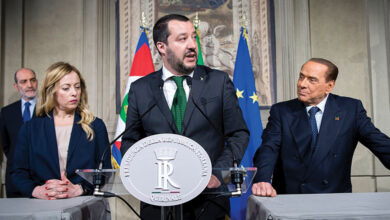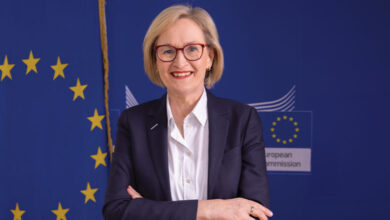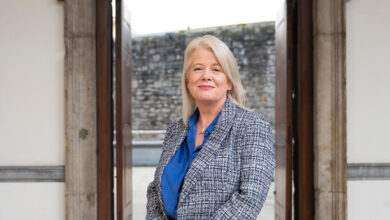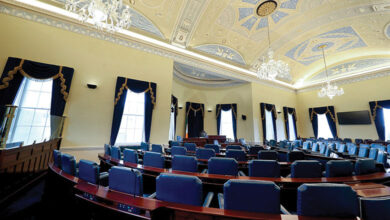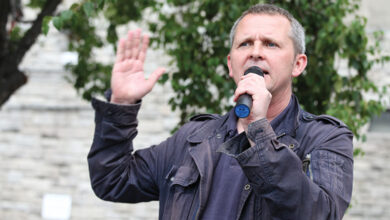The art of communication
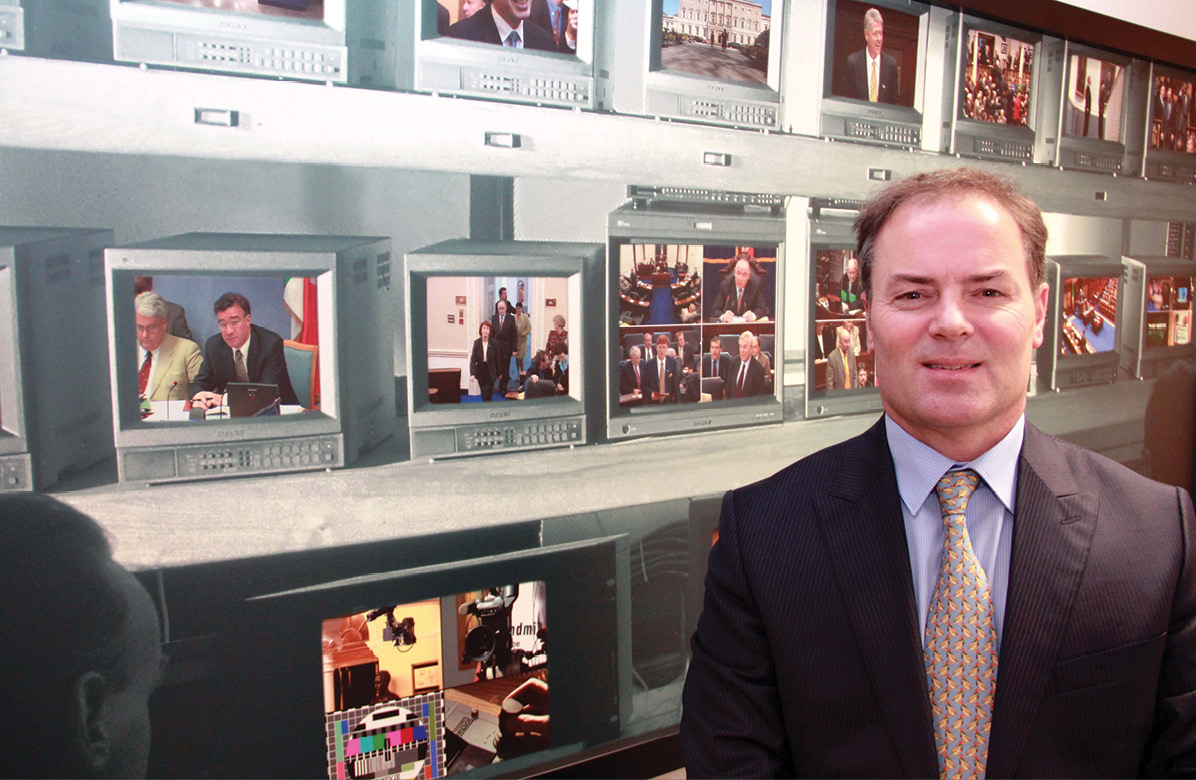
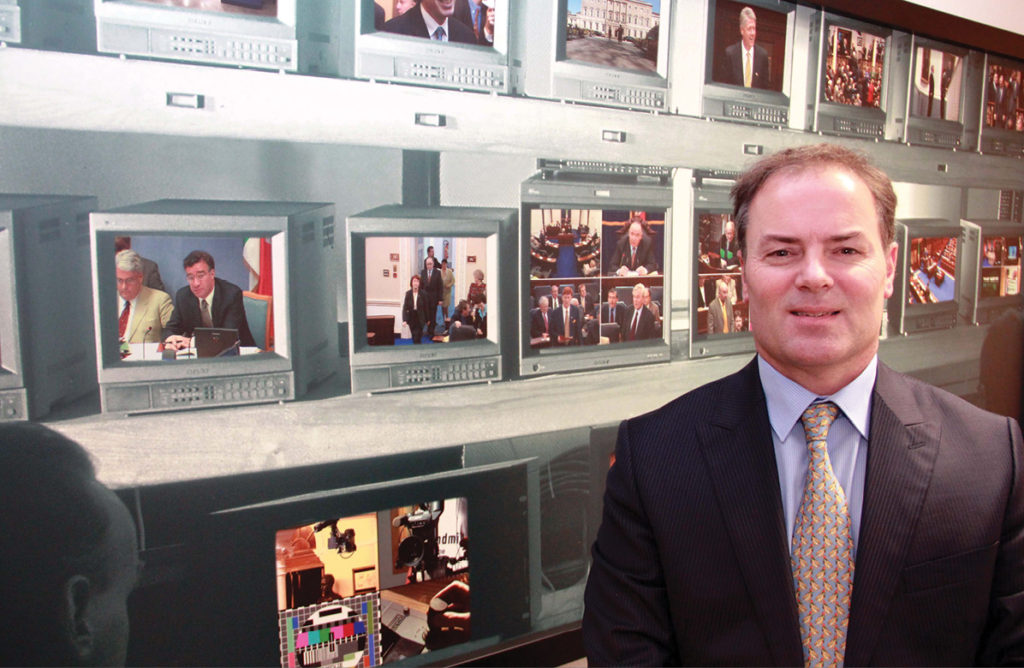
The work conducted in the Houses of the Oireachtas can regularly face intense barrages of media scrutiny. Ciarán Galway visits Leinster House to speak with Head of Communications Derek Dignam, the man in charge of promoting an enhanced understanding of these chambers.
Opening the discussion, Derek Dignam observes: “At the highest level, the job is about communicating and informing the public about the work of the Houses of the Oireachtas, our national parliament. The overall objective is to promote greater public understanding of the work of the Houses and its members. My role is to propose strategies and plans to give effect to that.”
The Communications Unit, Dignam notes, has various tools to achieve this. “Our Oireachtas broadcasting unit live streams across the six chambers – the two main chambers, the Dáil and the Seanad, and the four committee rooms. This takes place across multiple platforms. For example, on Budget Day we had a social media campaign running alongside a live stream to the web and live play out on Oireachtas TV. We have our press team which works with the various committees where a lot of very good work is done and we have a small web team which is currently working on a redesign of the website at the moment. That’s a large project for us.”
Initial impressions
Prior to assuming the role of Head of Communications, Dignam had been in the Houses of the Oireachtas for 16 years. Previously he had worked in the Department of Agriculture and before that in the Department of the Taoiseach. He notes: “I’m a civil servant. I’m not a communications professional, but the Houses of the Oireachtas has a really excellent Communications team which is fantastic and I’m learning.
“I suppose my initial impression was that the job is just so unpredictable. You can be hit by a fire storm with little warning. As a civil servant you’re well able to develop strategy, plan and implement. You know largely what is going to happen. However, there’s an unpredictable element to this role.”
Simultaneously, Dignam highlights: “The achievement of getting a TV station up and running was no mean feat and was largely due to the drive of the previous Ceann Comhairle, Seán Barrett. In fact, it’s a fantastic achievement. What Oireachtas TV does is to select and play out live the moments from the parliamentary schedule which are most likely to engage the public. To a great extent that relies on our editorial judgement. So we make editorial decisions, which are reviewed by the Editorial Board of the Houses of the Oireachtas Channel.” He jokes: “I didn’t realise when I was coming into this job that I would actually be running a small television station I have to say.”
With a significant volume of enquiries submitted for the Communications Unit to filter, the public appetite for information has made a significant impression on Dignam. “We know that people are watching Oireachtas TV because we have very kind people who tell us to repair the cracks in the walls or if the live stream goes down or there is a blip in any way, we’ll hear about it,” he quips. “We don’t have exact audience numbers but I do know that if anything goes wrong that we hear about it straight away. So there is a dedicated audience out there who really like Oireachtas TV.”
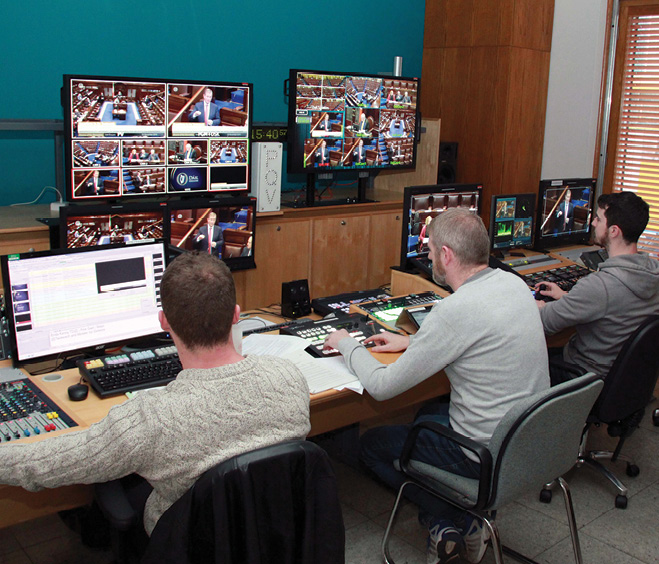
Social media
The Communications Unit was swift to realise the potential of Facebook Live as a new strand of social media and utilised it as a medium of disseminating information during the announcement of Budget 2017. “Over the day, we had over 23,000 views which was pretty impressive. Social media is really interesting at the minute. We use it for various campaigns. For example, during the secret ballot of the Ceann Comhairle, we were tweeting pictures and results. We also had a camera positioned in the count centre which streamed the Returning Officer, who is the Clerk of the Dáil, announcing the results of each count. We would like to build on that for the next time.”
Dignam emphasises: “Our advantage is that we can provide a unique insight to behind the scenes material. For example, we tweeted a photograph of the Presidential Proclamation for the dissolution of the House. This is the signed document from the President that would never have been previously seen by public so quickly.”
The objective is to provide an enhanced insight into the internal workings of the Oireachtas. “I think that adds an awful lot of value to the public experience. We used it during the Seanad elections too and because it’s not normally covered by mainstream broadcasting, we had a huge following for that as well. In fact, for the Seanad elections we had about two million impressions. That is really huge and it’s down to our social media team.”
Opportunities
Dignam identifies restoration as a substantial opportunity for his communications team. “We have a huge restoration project on the Georgian Leinster House about to start and as that progresses we will try to bring the best images and information we can to the public. The technology in the Dáil chamber project was completed over the summer and we were pleased to be able to use social media to bring images of the work as it progressed to the public. Offering these insights is just one way of telling the many stories that happen here on a daily basis.”
Other opportunities going forward concern the further development of the television channel. “At the moment we have practically seamless broadcasting out of the six chambers when they are live. That’s our main work. But obviously with Oireachtas TV we have to get to a position where people know what is on and at what time. That requires better scheduling from our side and it is not easy in a completely live environment.” Given the unpredictable nature of Oireachtas business and the potential for debates to exceed anticipated timescales this poses a challenge. “We need to create some way of having a stable schedule for the TV so that viewers know when to join in to see the things that they want to see or to be able to get it on the red button.”
He adds: “We also have to develop or use the opportunities presented by the fact that we’re now on Saorview. We’re already on Sky, Vodafone, eir and Virgin Media. Across those five platforms we have coverage in 98 per cent of households for Oireachtas TV and that was really important for us. That was a milestone and we’re delighted with it.”
Content
Dignam acknowledges that a concerted effort is required to ensure that the benefits derived from this broadcasting opportunity are maximised. “To optimise that opportunity we need to ensure that we have reasonable programming content, aside from the live proceedings. To develop content, we need to utilise the assets that we have in terms of our studio and location to, produce our own programming content or to commission it from the independent production sector. That’s the opportunity on the TV side. We’re currently developing an idea for the Ceann Comhairle’s lecture, which is not dissimilar from the Speaker’s Lecture in the House of Commons and we have other ideas which we are trying to progress as well.”
Centenary
The decade of centenaries has also proffered an influx of opportunities. 2019 represents 100 years of parliamentary democracy in Ireland. Dignam remarks: “When you’re sitting within it, and you have a stable parliamentary democracy, you take it for granted, but if you look at the trouble spots around the world, the first thing that goes is the parliament. It may seem obvious but if a country does not have a stable parliament or a stable democracy, it usually ends up in trouble. I suppose we’re trying to get people to appreciate the value of having nearly a century of stable parliamentary democracy in Ireland. So we will be developing a programme of events and exhibitions in the lead up to January 2019.
“As we see a demand, we will either commission documentaries ourselves or we will try and source them through the independent production sector. The Broadcasting Authority of Ireland have a competitive bidding process for funds for programme making and we would be interested, for example, in programmes from independent producers based on the 1918 elections, on women in parliament and, come 2019, the centenary of the first meeting of the Dáil.”
“I suppose we’re trying to get people to appreciate the value of having nearly a century of stable parliamentary democracy in Ireland…”
Website
In relation to the Communication Unit’s web presence, Dignam concedes: “The current website as it is at the moment is full of information, but it has low search functionality and it’s a little bit flat. We are currently working on a web development project which will launch at the end of the first quarter of 2017. That has been developed on the basis of a huge amount of user research in relation the way we store and re-use information internally and the way the public want to receive their information and also an enhancement of the search function. For example, people will be able to see a lot more information around acts, bills and the primary work that is done in the Houses. So we’re very excited about getting that up and running.”
He expands: “We will be trying to do as much as we can through social media. There is a merging of all of these platforms and we just need to make sure that we’re on top of that, that we actually recognise the opportunities for using social media and that we cross-promote our TV output.
“The absolute priority is to progress the TV station because it’s a very useful tool for presenting the work of members, of the Houses and of its Committees to the public. That’s what this is all about. This is not just the development of social media for its own sake. The social media campaigns that we run are about promoting what the members are doing in an engaging way and hopefully the public will come to value and appreciate that work.”
Public perception
Illustrating the volatile nature of the public perception in relation to the Oireachtas members, Dignam asserts: “It’s very hard to measure perceptions. In the past, research was conducted which indicates that a lot of people confuse parliament and government. The funny thing is though sometimes a small proportion of people who will tend to criticise members as a group will like their own local TD. It’s a conundrum arising from the nature of the Irish political system and perhaps something we need to address in our education programme.”
Summarising his role, Dignam contends: “Transparency is a good thing. I don’t think anyone is necessarily against that. I think that the members and the administration are very happy to have a mature debate around what happens in the Houses, at any level. Obviously what they don’t want, and what sometimes happens, is that that information is misused to have a swipe at them or to have a debate that descends into mediocrity. On the new website we will make the information as transparent as we possibly can. It is then up to the public to view and use that information as they wish. We can’t form their perceptions for them. They have to be formed by themselves and they have to make their own judgements on the work of the parliament and the work of the members.”
“If we can do that,” he concludes, “it’s a good day’s work.”

